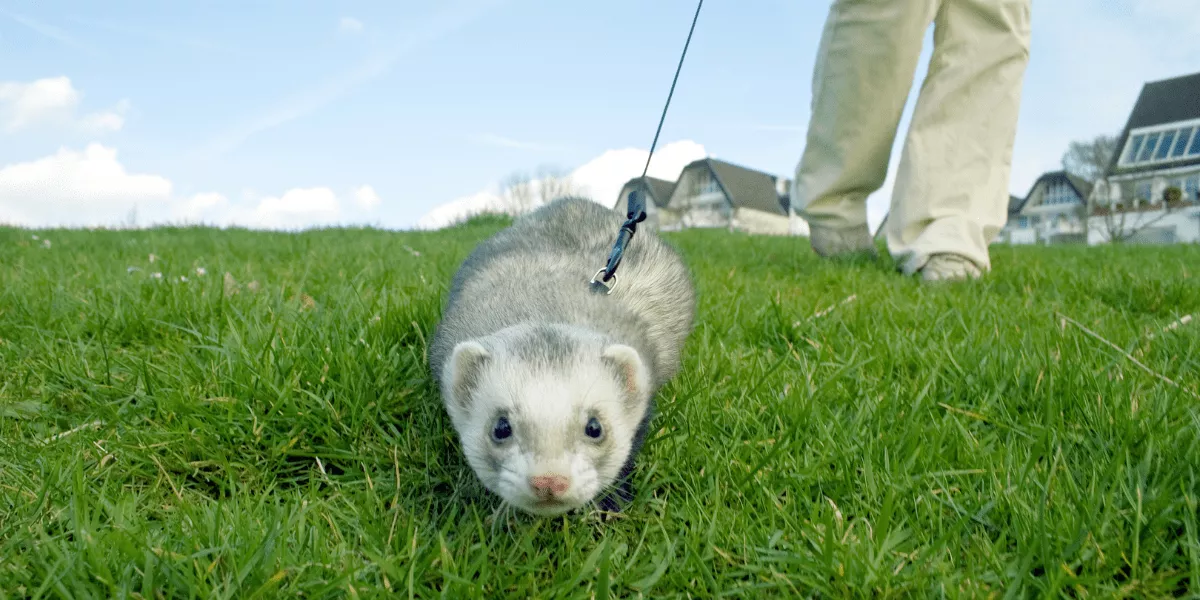
To litter train your small mammal pet, like a rat or ferret, pay attention to their bathroom habits and set up a suitable litter box in an accessible spot with low sides and the right bedding. Focus on positive reinforcement, put them in the box after meals or naps, and stay patient and consistent. Address any accidents calmly and consider having multiple litter boxes around. Mastering these basics will set you on the right track for successful litter training for your pet.
Understanding Your Pets Behavior
To successfully litter train your small mammal pet, observe and understand its behavior patterns. Pay attention to when and where your pet tends to eliminate. Small mammals like rats or ferrets often have specific spots they prefer for bathroom activities. By recognizing these patterns, you can strategically place the litter box in those areas to encourage its use.
Additionally, observe your pet's body language. Signs like sniffing around, circling, or stopping in a particular spot can indicate that it needs to relieve itself. By being attentive to these cues, you can quickly guide your pet to the litter box, reinforcing the desired behavior.
Understanding your pet's behavior also involves recognizing its preferences. Some small mammals may prefer specific types of litter over others. Experiment with different options to see which one your pet responds to best. Providing a comfortable and inviting litter box setup tailored to your pet's preferences can greatly increase the chances of successful litter training.
Setting Up the Perfect Litter Box
Consider the ideal location within your pet's living space to place the litter box for maximum accessibility and comfort. When setting up the perfect litter box for your small mammal pet, such as a rat or ferret, it's essential to choose a spot that's easily accessible to them. Place the litter box in a quiet area where your pet feels safe and comfortable, as they're more likely to use it consistently in a peaceful environment.
Ensure that the litter box is large enough for your pet to comfortably enter and move around in. Choose a box with low sides to make it easy for them to access it, especially if they're small or elderly. Line the litter box with appropriate bedding material, such as paper-based or pelleted litter, to absorb odors and moisture effectively.
Additionally, consider placing the litter box in a corner or against a wall to provide a sense of security for your pet while they use it. Regularly clean and maintain the litter box to encourage good litter habits and keep your pet's living space clean and hygienic. By setting up the perfect litter box in the right location, you can help your small mammal pet easily adapt to using it for their bathroom needs.
Training Techniques and Tips
When introducing training techniques and tips for litter training small mammal pets, focus on positive reinforcement to encourage desired behaviors. Use rewards like treats or verbal praise when your pet uses the litter box correctly.
Place your small mammal in the litter box after meals or naps since they're more likely to go to the bathroom at these times. Be patient and consistent with your training efforts, as it may take time for your pet to learn.
Keep the litter box clean and change the bedding regularly to maintain a hygienic environment that encourages your pet to use it. If accidents happen outside the litter box, clean up the mess promptly and avoid scolding your pet, as this can cause stress and hinder the training process.
Consider placing multiple litter boxes in different areas of your pet's enclosure to increase the likelihood of successful litter training. With dedication and positive reinforcement, your small mammal pet can learn to use the litter box effectively.
Troubleshooting Common Litter Training Issues
If your small mammal pet is having trouble with litter training, start by identifying any potential reasons for their accidents. Common issues include the litter box being too small or difficult for your pet to access, the litter not being suitable or changed frequently enough, or stress and changes in their environment causing accidents.
Ensure the litter box is appropriately sized for your pet, easily accessible, and filled with an appropriate litter material like paper-based or pelleted options. Regularly clean the litter box to maintain cleanliness and encourage your pet to use it consistently.
If accidents persist, consider placing multiple litter boxes in different areas of their enclosure to increase accessibility. Additionally, provide positive reinforcement, such as treats or praise, when your pet successfully uses the litter box.
With patience, consistency, and addressing any underlying issues, you can help your small mammal pet overcome litter training challenges and develop good habits.
Conclusion
Overall, training your small mammal pet to use a litter box can take time and patience, but with understanding their behavior, setting up the right environment, and using positive reinforcement techniques, you can successfully teach them where to go to the bathroom.
Remember to be consistent and gentle in your training approach, and don't get discouraged if there are setbacks along the way.
With dedication and persistence, your pet will learn to use their litter box effectively.




